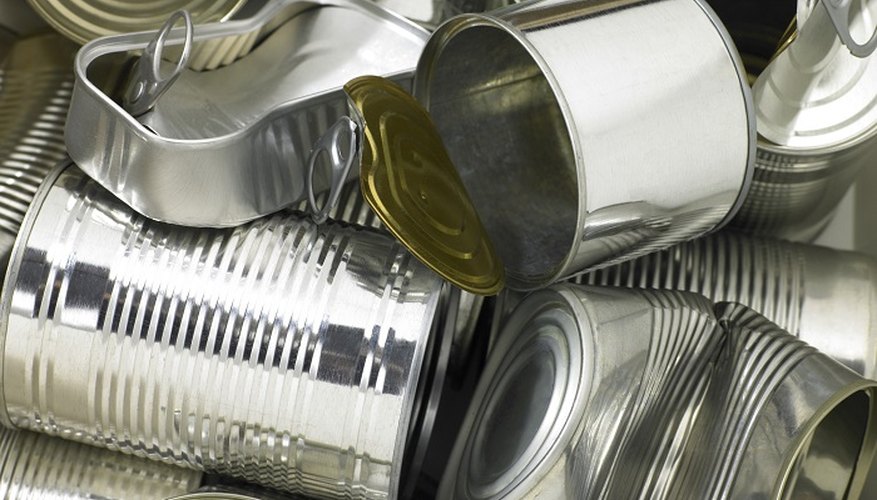Creosote is a natural byproduct of burning wood in a wood stove or fireplace. Since creosote can build up in the chimney flue and cause a dangerous chimney fire, it is important to remove the creosote build-up each year by using chimney brushes or by calling a professional chimney sweep to do the job. One method to loosen crusty or tarry creosote so it flakes off and falls down into the firebox or fireplace is to burn aluminium cans in a very hot fire. While this method works, it does not clean the chimney of creosote completely, and chimney brush cleaning is still necessary.
- Creosote is a natural byproduct of burning wood in a wood stove or fireplace.
- One method to loosen crusty or tarry creosote so it flakes off and falls down into the firebox or fireplace is to burn aluminium cans in a very hot fire.
Open the stove or fireplace damper completely. Place newspaper and kindling in the firebox or grate. Roll up some other newspaper and light it. Hold the lit, rolled newspaper inside the stove near the flue to warm it and get a draft going.
Light the paper and kindling and gradually add the dry hardwood. Get a hot fire burning using the draft regulator. For wood to burn efficiently, it must have a continual source of oxygen, so a good draft is necessary.
- Light the paper and kindling and gradually add the dry hardwood.
- Get a hot fire burning using the draft regulator.
Maintain a very hot fire, adding logs carefully to avoid smothering the fire. The flue temperature should exceed 120 degrees C (250F).
As the fire burns hotter, add a few aluminium cans to the fire. Go outside and check the chimney. Heavy smoke is a sign that creosote may be forming. Use a small amount of wood and refill the box often. A small hot fire is better than an overloaded fire.
As the cans burn in a very hot fire, the manganese in the aluminium is released, which causes the crusty, tarry creosote to break down and flake and turn into powder. While the creosote powder or flakes may end up in the firebox and be easy to clean out the next day, it could also be caught in the elbows of the stove pipe if you have a wood stove. Clean the stove pipe, checking any elbows, the next day after the fire is out and the stove cool.
TIP
Burning aluminium cans does not get rid of the creosote, it merely turns it to flakes and powder. Some may fall into the grate or firebox, but residue will still exist in the chimney flue. You must still clean the chimney with the correct chimney brushes.
WARNING
The aluminium can method is not recommended by government sources or safety experts.
